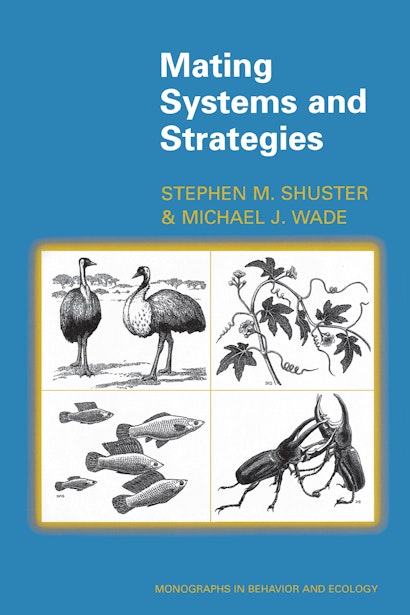This book presents the first unified conceptual and statistical framework for understanding the evolution of reproductive strategies. Using the concept of the opportunity for sexual selection, the authors illustrate how and why sexual selection, though restricted to one sex and opposed in the other, is one of the strongest and fastest of all evolutionary forces. They offer a statistical framework for studying mating system evolution and apply it to patterns of alternative mating strategies. In doing so, they provide a method for quantifying how the strength of sexual selection is affected by the ecological and life history processes that influence females’ spatial and temporal clustering and reproductive schedules.
Directly challenging verbal evolutionary models that attempt to explain reproductive behavior without quantitative reference to evolutionary genetics, this book establishes a more solid theoretical foundation for the field. Among the weaknesses the authors find in the existing data is the apparent ubiquity of condition-dependent mating tactics. They identify factors likely to contribute to the evolution of alternative mating strategies—which they argue are more common than generally believed—and illustrate how to measure the strength of selection acting on them. Lastly, they offer predictions on the covariation of mating systems and strategies, consider the underlying developmental biology behind male polyphenism, and propose directions for future research.
Informed by genetics, this is a comprehensive and rigorous new approach to explaining mating systems and strategies that will influence a wide swath of evolutionary biology.
Stephen M. Shuster is Professor of Invertebrate Zoology at Northern Arizona University. Michael J. Wade is Professor of Biology at Indiana University.
"I found the book to be so compelling that I read it twice (and will read it again). It is challenging and provocative. . . . The authors are accomplished teachers and each chapter is logically structured, informed, informative and interesting without every being patronizing or obscure."—Michael T. Siva-Jothy, Trends in Ecology and Evolution
"It is a major landmark in the area of sexual selection and mating systems and is a must read for anyone interested in moving this field forward."—Alexander V. Badyaev, Ecology
"The book delivers on its promise to present a thorough framework for quantitative analyses, and it does so with admirable clarity, guiding readers through the models so that any interested biologist can follow."—Mary Jane West-Eberhard, Quarterly Review of Biology
"Shuster and Wade place the study of animal mating systems and alternative mating strategies in a comprehensive theoretical framework. This framework is both elegantly simple and comprehensive. Most importantly they demonstrate with real life examples the utility of their approach and demonstrate that it can be tested empirically. It will serve as a benchmark for research in this area for many years to come."—Derek Roff, University of California, Riverside
"This ambitious and wide-ranging book offers new ways to look at sexual selection and its many consequences. Shuster and Wade have done the field a great service by challenging existing theory with respect to the evolution of mating systems and alternative mating strategies. Because they also provide the key predictions derived from their approach, they and others will be able to test their ideas even more fully in the years ahead. Let the fun begin. "—John Alcock, Arizona State University
"This important and original book addresses the issues that are attracting attention from a broad community studying the evolution of reproductive strategies. Its comprehensiveness and rigor give it the potential to influence a large field of research, and its personal perspective gives it the potential to redirect the field. The authors boldly challenge many current views of mating systems and alternative mating strategies. If they are correct, this book will likely become a landmark."—Mart Gross, University of Toronto
"This is an exceptional and thought provoking contribution to behavioral ecology. It uses excellent examples, slays some sacred cows, and is superbly written and often brilliant."—Barry Sinervo, University of California, Santa Cruz

